|
Guanaco (Lama guanicoe)
|
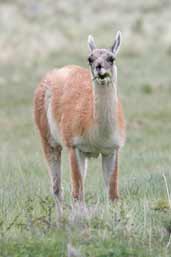 |
Chile
The Guanaco is distributed in the foothills of the Andes of Peru, Chile and Argentina. They are found in grassland and shrubby
areas up to about 4,000 metres. They feed on grasses and shrubs.
They are usually in herds of many females and youngsters with one alpha male patrolling his "harem" often from a hill
top (see photo 3) from where he can spot rival males trying to move in on his females and so chase them away (photo 4).
The gestation period is 11½ months and each female gives birth to a youngster each year. So a female is only not
pregnant for about 2 weeks in every 12 months.
|
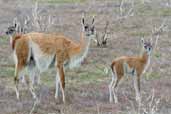 |
This explains why the males are so aggressive to rivals and so intent on mating with the females even with very
young guanacos about. Indeed, the female that we saw giving birth was being molested by a male on a few occasions during the actual birth (which
prompted my wife to shout rude things about males in general while she watched this drama unfold.) |
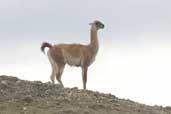 |
Photos 5 to 14 show a sequence of shots I took while we watched a youngster being born.
Photo 15 was taken at Pinguino de Humboldt National Park north of La Serena showing a guanaco foraging in the cacti of the
coastal desert..
|
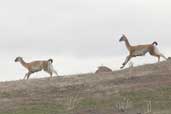 |
. |
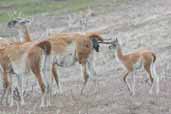 |
It's 11:08 in the morning and, while watching a large herd of guanacos, we notice this female with a baby
showing its head and its front legs.. |
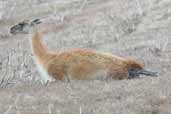 |
11:13. She sits down occassionally presumably in a combination of tiredness and trying to get the baby
born.. |
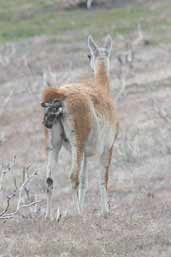 |
11:23. Not much progress and we begin to worry that there might be something wrong.. |
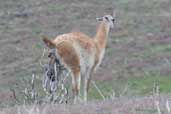 |
11:41. Suddenly, the mother arched her back and bent back her ears and the baby moved quickly out of the
womb.. |
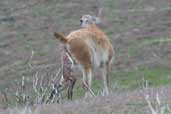 |
11:42. A minute later and the baby is almost out.. |
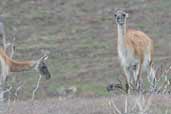 |
11:48. The baby is born and some of the other females show an interest |
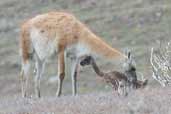 |
11:48. The baby is pushing up on its front legs while being cleaned by its mother. |
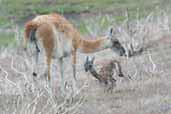 |
11:52. Its up and then down again as it tries to get up on its very long, spindly legs. |
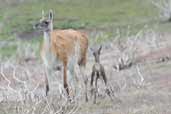 |
11:56. The youngster is managing to stand on its feet - but only just. |
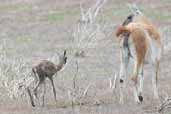 |
12:04. Almost an hour after we noticed the mother about to give birth, and about 15 minutes after being born, the
youngster is walking and beginning to show a bit more colour as it dries off. Shortly, it will be able to run as fast as a man which is just as well.
Almost 50% of young guanacos (known as Chulengos) fail to make it to their first birthday. Most are killed by Puma Puma
concolor. |
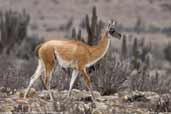 |
|
|
|














